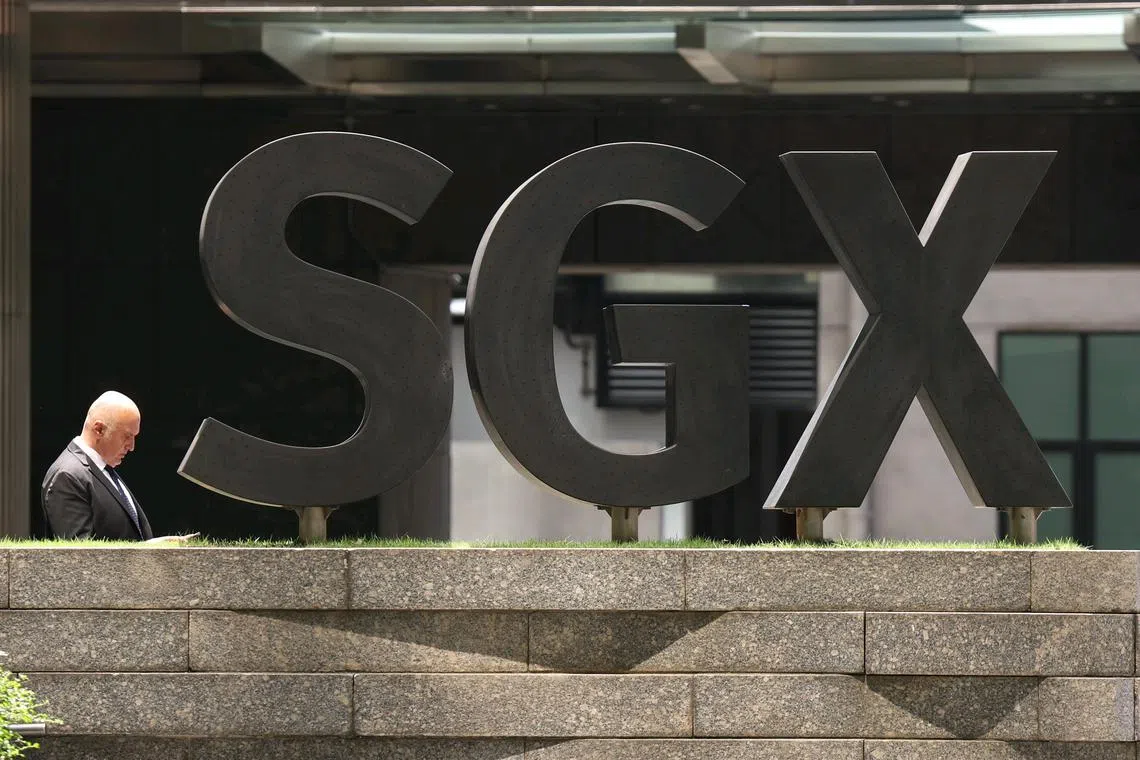STI slips 0.3% despite Singapore’s upgraded 2025 growth outlook
Sign up now: Get ST's newsletters delivered to your inbox

Across the broader market, gainers beat losers 276 to 241, after 1.4 billion securities worth $1.6 billion were traded.
PHOTO: ST FILE
Ranamita Chakraborty
Follow topic:
SINGAPORE - Stocks on the local bourse ended lower on Aug 12 for the third consecutive session. The decline occurred despite gains in most regional markets, and an upgrade in Singapore’s full-year growth forecast.
The benchmark Straits Times Index (STI) ended down 0.3 per cent or 12.06 points at 4,220.72.
Across the broader market, gainers beat losers 276 to 241, after 1.4 billion securities worth $1.6 billion were traded.
The Ministry of Trade and Industry (MTI) raised its 2025 growth projection to a range of 1.5 per cent to 2.5 per cent, from 0 per cent to 2 per cent previously.
It said the revised forecast reflects better-than-expected economic performance in the first half of the year, but cautioned that “the economic outlook for the rest of the year remains clouded by uncertainty, with the risks tilted to the downside”.
The ministry added that it will continue to monitor developments in global and domestic economies, and adjust the forecast over the course of the year if needed.
UOB associate economist Jester Koh said that “MTI’s assessment of the external demand prospects has turned more optimistic compared with three months ago, reflecting the resilience in the growth performance of most advanced and regional economies” in the first half of 2025.
Raising his full-year growth forecast to 2.2 per cent, he noted that the economic outlook was aided by front-loading activities as well as easing trade tensions, as many trading partners – including Japan, South Korea and several Asean economies – managed to reach deals for lower reciprocal tariff rates with the US.
Elsewhere in the region, most markets ended higher following US President Donald Trump’s decision to extend the trade truce with China, postponing his reciprocal tariffs for another 90 days. This move keeps tariffs at 30 per cent for Chinese goods and 10 per cent for American goods, delaying the plan to increase these to 145 per cent and 125 per cent, respectively.
“Markets were well-primed for this move, so it was a bit ‘meh’ on Wall Street yesterday as the S&P 500 and Nasdaq flirted with all-time highs,” said Mr Neil Wilson, investor strategist at Saxo Markets. However, the announcement “seemed to buoy the mood in Asia overnight as the Topix and Nikkei 225 in Tokyo both hit record highs”, he added.
Japan’s Nikkei 225 rose 2.2 per cent, Hong Kong’s Hang Seng Index added 0.3 per cent, and the Shanghai Composite climbed 0.5 per cent. Malaysia’s KLCI also inched up, by 0.3 per cent.
However, South Korea’s Kospi Composite Index fell 0.5 per cent.
Back home, the top blue-chip performer was DFI Retail Group. It gained 1.1 per cent to close at US$3.53.
At the bottom of the STI was Keppel, which lost 3.1 per cent or 27 cents to end at $8.31. The decline followed news that the company plans to sell M1’s telecommunications business to mobile network operator Simba Telecom for $1.43 billion.
The transaction is expected to result in a $222 million accounting loss, due mainly to goodwill and intangible assets tied to the telco business.
The trio of local banks ended the day mixed.
DBS Bank advanced 0.4 per cent or 21 cents to $50.96, UOB was up 0.3 per cent or 12 cents at $35.87, while OCBC Bank lost 0.8 per cent or 13 cents to finish at $16.75. THE BUSINESS TIMES

